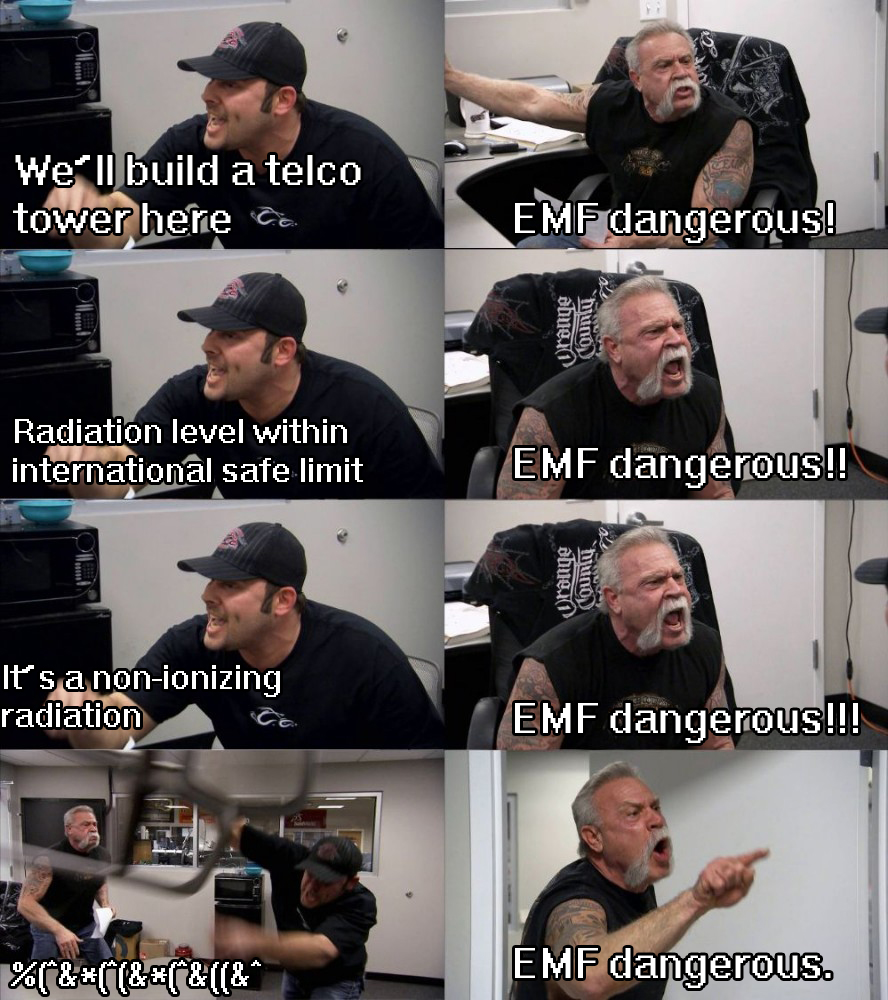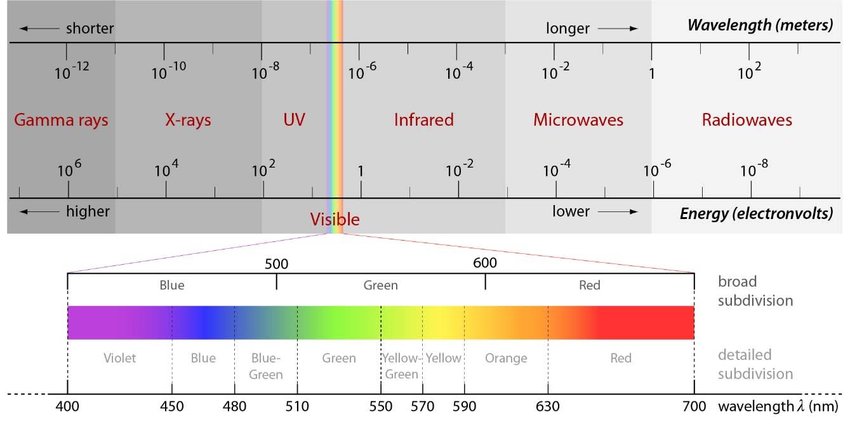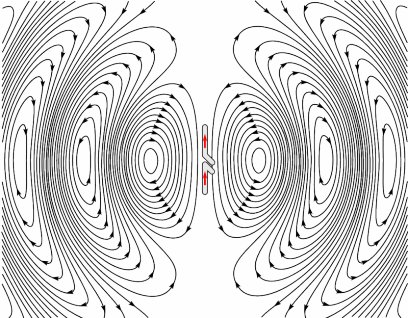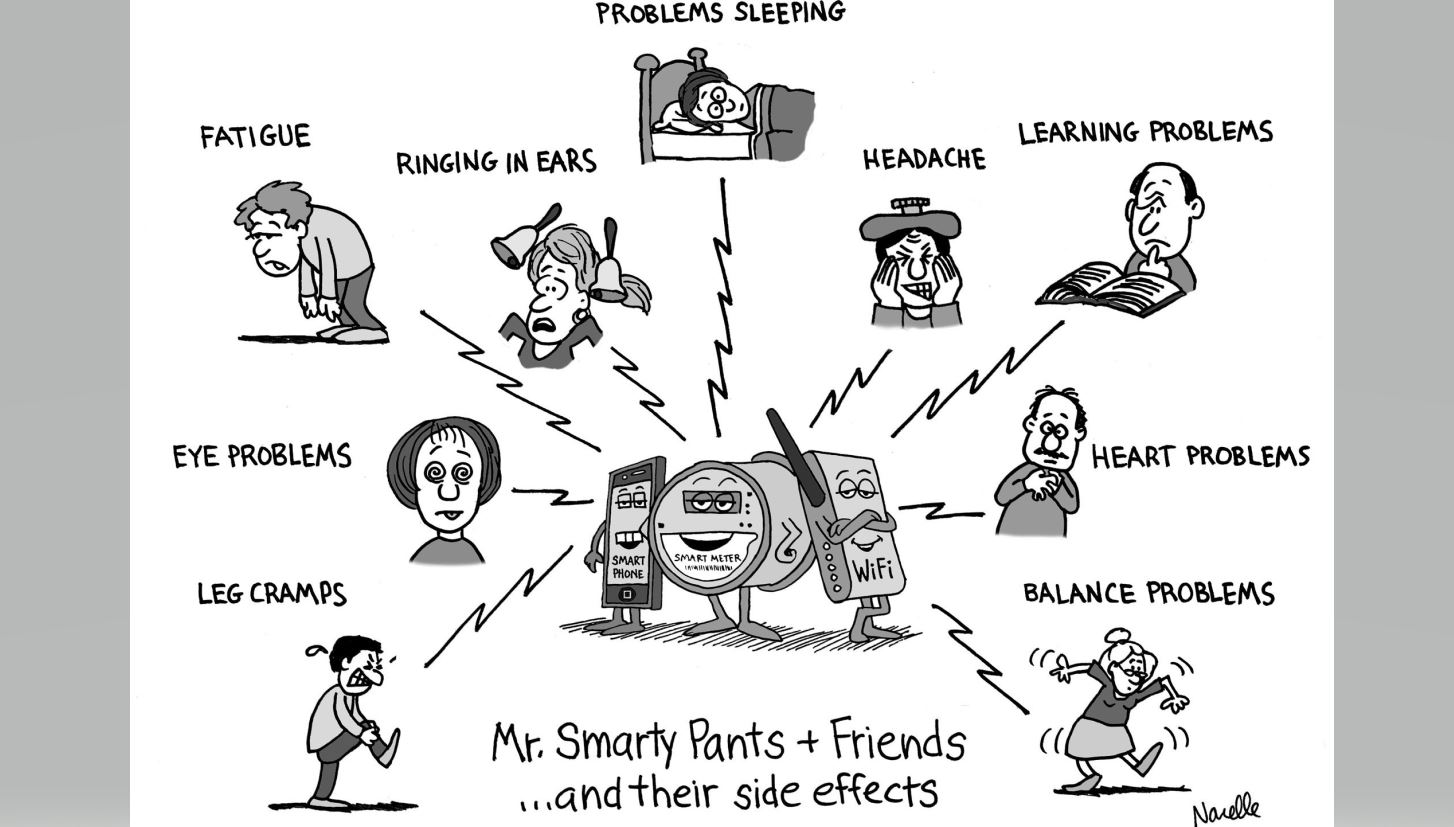Are telco towers as dangerous as some Malaysians claim? We look at the facts.

- 840Shares
- Facebook773
- Twitter10
- LinkedIn10
- Email12
- WhatsApp35
Mobile phones, the Internet, and practically anything wireless are basically magic to those not familiar with the technology, and to some, they are downright suspicious.
Which is perhaps why a group of 20 Penangites recently staged a protest against a telco tower that went up near a water storage tank at Pearl Hill earlier this month. According to Teoh Bibi, their spokesperson, the telco tower will cause the water in the tank to be subject to excessive electromagnetic (EMF) bombardment.
“Published research shows that harmful radiation from telco towers can reach as far as 150m or more… We wonder why PBA (Penang Water Supply Corporation) gave up its land to telco towers to be placed next to their tanks. Is this safe? Can you show us any scientific report?” – Bibi Teoh, as reported by FMT.
Bibi and her crew hasn’t been the first to be offended by telco towers. In 2017, an assistant minister had to convince the assembly that the radio frequency (RF) emitted by telco towers sprouting up in Sarawak aren’t hazardous, and the Perak state assembly was assured of the harmlessness of telco towers in Ipoh back in 2014. We can probably get more examples, but despite the authorities repeatedly telling people that telco towers are harmless, people have repeatedly insisted otherwise.

So with the persistent cycle of protests and assurances, one might wonder if telco towers are really as harmless as the government claims. So let’s explore that, starting with…
What’s so dangerous about the radiation from telco towers anyway?
Some of you have probably said “Oi, it’s radiation! Of course it’s dangerous!” in your head just now, but not all of them are dangerous. #NotAllRadiation. Telco towers (or radio towers) send and receive data through radio waves, which is a kind of electromagnetic radiation. This puts radio waves in the same family as gamma rays, X-rays and UV light, which we won’t argue are dangerous as heck.
However, if you take a look at this chart of the types of electromagnetic radiations…

…the difference between radio waves and its more dangerous brothers is the energy they carry with them. Gamma, X, and UV rays are so dangerous because they carry a lot of energy with them. These rays are known as ionizing radiations, because they have enough energy to ionize (read: strip away electrons from) the stuff they come in contact with.
In a way, this makes them very dangerous to life, because they can affect DNAs and strip away parts from it, causing mutations and cancer. The rest of the spectrum also carry some energy with them, but not enough to ionize the molecules they come in contact with. These are the non-ionizing radiations, and some, like visible light, carry just enough energy to affect molecules in our eyes and enable us to see, or affect molecules in plants which enable them to photosynthesize.
Radio waves, the kind we use for communication (and mobile phones), is at the lower energy end of the spectrum, and when they come into contact with metals they can make the electrons move around. This induces a current on the surface of, say, a metallic antenna, which can be deciphered into data. This is the basis behind radio communication.

So to sum up, if the different types of electromagnetic radiation are ninjas in an anime, radio waves are like that one ninja that’s too caught up in her romantic storyline to actually learn how to fight. Still, it’s a lovey-dovey ninja is a ninja nonetheless, so how deadly are radio waves? Well…
After three decades of research, the scientific community is still not sure if it’s dangerous

We’re not saying that radio waves aren’t dangerous, but if it is, scientists and researchers are having a hard time proving it. The Malaysian Communications and Multimedia Commission (MCMC) was recently quoted as saying that scientists all over the world have conducted some 24,000 studies over the past 30 years on the matter, but there has yet to be one that conclusively proves the harm the radio frequency (RF) radiation from these towers can cause.
While the International Agency for Research on Cancer (IARC, a body affiliated with WHO) had categorized EMF from telco devices and towers as possibly carcinogenic (causing cancer), it is actually classified as a Group 2B carcinogen, meaning that it’s not unthinkable for EMF to cause cancer, but they can’t say for sure that EMF is the culprit. Even the American Cancer Society have said that radio frequency (RF) radiation does not carry enough energy to damage DNA directly, so it’s not clear how exactly it might cause cancer.
Still, research in the area is ongoing, and besides radiation directly affecting the DNA, other effects of RF radiation on biological systems, like how it affects certain hormones and bodily systems, are being looked at.

The only concrete effect of radio waves so far is causing body tissues to warm up, but only if a large amount of radio waves is absorbed by them. This may lead to burns and tissue damage, but many countries (including Malaysia) adopt standards set by the International Commission on Non-Ionizing Radiation Protection (ICNIRP), and enforcement in Malaysia is carried out by the MCMC to ensure that RF radiation from telco towers are at a safe level.
“Any non-compliance to MCMC’s mandatory standards shall attract a fine of up to RM20,000 for the operator, hence ensuring public safety remains a top priority at all times,” – Dr Abdul Rahman Junaidi, then Sarawak’s Rural Electricity Assistant Minister, as reported by The Star.
Despite scientists and researchers not being able to find a surefire link between RF radiation and human health yet…
People have claimed to be hurt by RF radiation, but radiation might not be the real cause

Back in 2014, it was reported that a UiTM associate professor, Dr Adlina Suleiman, did a series of independent studies which found that people living near to telco towers have a higher chance of experiencing symptoms like headaches, giddiness, insomnia, loss of memory, diarrhea, mental slowness, reduced reaction time and mood swings. While it wasn’t explicitly stated in the report, the symptoms bear a resemblance to a curious condition known as electromagnetic hypersensitivity (EHS), which have popped up all over the world.
Sufferers of EHS experience very real symptoms like what Dr Adlina found, but also a host of other things like panic attacks, skin rashes, nausea and many more whenever they get close to devices or structures (like telco towers) that emit RF radiation. As told by a local EHS sufferer, Lily Law, her skin would become red, irritated and itchy almost as soon as they go near wireless internet devices or telco lines, while her son would become more hyperactive than usual and get headaches.
“Actually, the doctor also doesn’t know why my skin is like this. It’s very itchy sometimes. Every day, I need to take medicine to control my skin problem. After I use cable (services) to connect my computer, now it’s not so bad,” – Lily Law, local EHS sufferer, as reported by Astro Awani.
However, not many countries recognize EHS as a ‘real’ health condition. For one thing, the symptoms of EHS are non-specific symptoms, meaning that they can also be caused by a myriad of other things, and different sufferers develop different symptoms. For another thing, several experiments on EHS sufferers found that they don’t need to be exposed to actual RF radiation to develop their symptoms: they only need to believe that they are being exposed.

From villagers in South Africa falling sick from a radio tower that wasn’t actually active to experiments that found that people who saw a documentary badmouthing WiFi signals are more likely to fall sick, it’s highly probable that the belief that RF radiation is bad for you is the actual cause for EHS instead of the RF radiation itself.
Even the WHO had suggested that symptoms experienced by people with EHS may actually come from environmental factors not related to EMF, like flickering lights, poor air quality, glare, or… stressing about EMF.
“There are also some indications that these symptoms may be due to pre-existing psychiatric conditions as well as stress reactions as a result of worrying about EMF health effects, rather than the EMF exposure itself.” – WHO.
Regardless of whether or not RF radiation is really dangerous, putting a telco tower right next to a water tank won’t turn Penang into a radioactive wasteland. Still, if you’re not convinced…
Here’s how you can keep yourself safe from RF radiation
While we have sort of established that there’s no conclusive link between RF radiation and human health, you can never feel too safe. According to Dr Adlina from earlier, it took scientists 40 years to find evidence that smoking tobacco can cause cancer, and by the time scientists finally prove that RF radiation is cancerous, it might be too late.
So what can you do? Well, as a stop gap measure, you can grab some tin foil out of your kitchen and fashion a tin foil hat.

It might sound… ironic, but tinfoil hat acts as a sort of Faraday cage, which blocks all sorts of weak electromagnetic radiation. We’ve actually written on how shoplifters have used tin foil to sneak merchandise through anti-theft gates in department stores, so you might want to check that out. Wearing a tinfoil hat should protect your brain from those pesky RF waves inundating the atmosphere.
As for symptoms caused by EHS… since it seems that people get EHS symptoms by believing that RF radiation is harmful, believing that it’s good or harmless might do wonders for your well-being. You can even adopt a mantra like “The radiation will bring me fulfillment. The radiation will bring me success. The radiation will bring me joy,” if you want, but in all seriousness, you can probably see a doctor and get treatment and medication for most of the symptoms.
If positive thinking didn’t work, and convincing the authorities to not build a telco tower so close to you fell on deaf ears, then maybe you can follow the example of a Swedish EHS sufferer and move out into the wilderness, where there are no telco towers or power lines. In Malaysia, that might be a bit hard, since it was estimated that we have more than 22,682 cellular towers in Malaysia in 2018, and the number might have grown since. This map that marks known locations of telco towers might help you plan, though.
With all that 5G talk the government is going on about, there will probably be more telco towers coming up in the future. Will there be more protests? Probably. Will they stop the construction of telco towers? Probably not, although construction might slow down a bit. But at least we’ll get faster internet while waiting for some conclusive radiation research results to show up.
- 840Shares
- Facebook773
- Twitter10
- LinkedIn10
- Email12
- WhatsApp35
